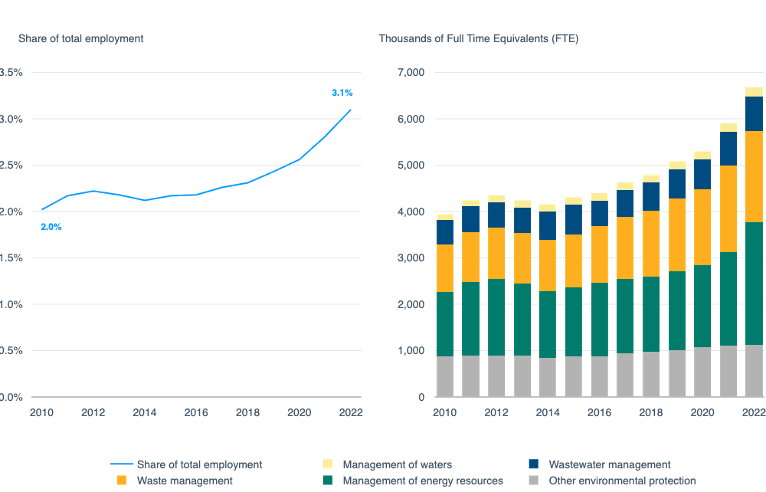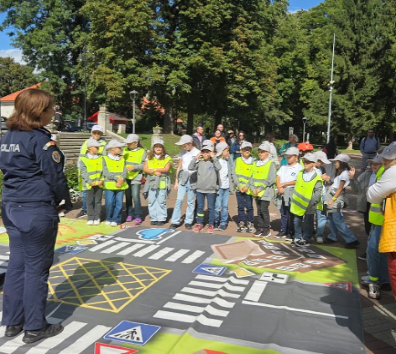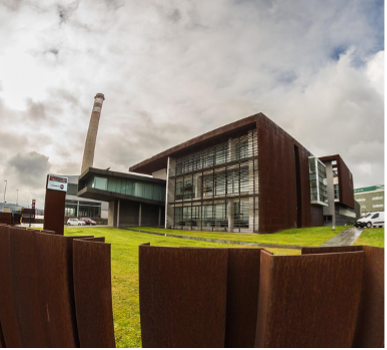On 13 November 2025, 134 city practitioners, experts, and green economy enthusiasts gathered together to consider, ‘What is a thriving green urban economy?’. Does it depend on the size of the city, its local economic policy, or available tools?
This article keeps the conversation going on why a green urban economy matters and what we can learn from different city stories. These stories, based on the work of five URBACT networks, shed light on how a green economy can be achieved, even from different starting points.
What makes an urban economy ‘green’ (and why it matters)
‘Green cities’ and ‘green economies’ have become a part of the urban sustainability lexicon. Generally speaking, a green economy improves human wellbeing and social equity, while significantly reducing environmental risks and ecological scarcities. Green cities, apart from building on these principles, also gear up innovation. Innovation has the power to promote green and sustainable growth, to create relevant green skills and jobs, which in turn have an impact on social equity and human wellbeing. Green cities, innovation, and sustainable growth are three gears of one engine fuelling a city with a green urban economy.

In the last decade, the European Green Deal and the Eighth Environment Action Programme helped employment in the EU’s environmental goods and services sector from 2.02% of total employment to 3.1% between 2010 and 2022. This resulted mainly from the creation of jobs related to renewable energy, energy efficiency and waste management. In parallel, the EU aims to accelerate the green transition of its economy and become carbon neutral by 2050. This is expected to boost jobs in the EU’s green economy in the coming years and further increase the share of green employment in the economy.

This demonstrates the necessity for cities to be prepared and learn from each other – now more than ever.
Why do greening economies matter…now, more than ever?
1. Cities are where the pressure – and potential – concentrate.
Cities occupy less than 2% of the Earth’s surface yet consume over 70% of resources and generate more than 60% of emissions. Urban economies are the engines of growth, but also the frontline of environmental stress: energy use, mobility, construction, waste.
2. Resilience is now an economic necessity, not a choice.
Climate shocks, supply chain disruptions, and energy price volatility have revealed the vulnerability of traditional linear, resource-intensive urban economies.
3. The green transition creates new local value.
Repair, reuse, local production, renewable energy, and sustainable construction generate local jobs, innovation, and skills that stay within the community.
4. Citizens expect it.
Urban residents increasingly demand healthier, cleaner, and more liveable environments. They are also consumers and potential innovators.
5. Timing matters.
European cities are now implementing Local Green Deal, Circular Economy Action Plans, and Just Transition frameworks. The financial and regulatory windows are open, from EU funding to private investment in sustainable infrastructure.
Methods for greening the economy: five entry points
Many European cities have already started the green transition of their economies. Inspired by testimonials from five URBACT networks, the following city examples shed light on greening the economy from different entry points: encouraging citizens participation, regenerating unused spaces, adopting circular economy models, exploiting the low-carbon energy and sustainable mobility solutions, and reshaping industrial areas.
#1 – Citizen-led climate action
By recognising communities as co-creators of change, the URBACT Action Planning Network COPE helps expand municipal efforts. As part of this effort, Bistrița (RO) has improved cycling infrastructure and green mobility through active community engagement. This reflected a major departure from previous approaches, which involved fossil-based mobility and low civic awareness of the green potential.
“Working place-based with people can go in many directions. It very much depends on the people participating and the people leading the processes. Fortunately, we still have the human factor present in our work!” said Øystein Leonardsen, COPE project coordinator, Copenhagen (DK).

#2 – Reviving forgotten urban spaces
The URBACT Action Planning Network GreenPlace focuses on transforming unused or forgotten urban sites. In Wrocław (PL), the network supported a major participatory process to redesign a disused tram depot. Through a two-day hackathon with residents, the city explored nature-based solutions and new uses for the site. The result: the creation of a ‘Green Boiler House’ zone, designed to serve as a leisure space, strengthen community ties, and test blue-green infrastructure and water management solutions.
#3 – Advancing circular economy practices
The URBACT Action Planning Network LET’S GO CIRCULAR! enables, supports, and serves circular economy in cities. This can take many forms and involve different practical solutions. In Munich (DE), for instance, new procurement guidelines help integrate circularity into public restaurants and canteens. Lisbon (PT) is building a digital platform to connect residents and tourists with verified circular businesses. Granada (ES) combines student-led bike refurbishment with app development, tackling poor air quality while boosting youth skills and local cooperation. These actions show how circularity can support local jobs, sustainability, and smarter urban systems.

#4 – Greening small cities in transport corridors
The URBACT Action Planning Network EcoCore supports small cities along transport corridors in leading the green transition, by working with businesses and building capacity. In Balbriggan (IE), local authorities launched sustainability training, green skills programmes, and a new strategy co-developed with local firms, hence the municipality started by working with businesses and going more open with the public. Pärnu (EE) held an Economic Forum to build partnerships around climate projects, now set to become an annual event. These cities show that even with limited resources, smaller urban areas can drive industrial transformation.
“Too often municipalities are so busy doing the work that we forget to tell people what we're doing. Sharing the stories of the EcoCore project and the sustainability journeys of our local businesses has proven to be a very powerful tool”, said Aoife Sheridan, EcoCore project coordinator, Balbriggan.
#5 – Governance for industrial green transitions
The URBACT Action Planning Network In4Green unites 10 industrial cities, formerly heavily polluted. In Avilés (ES), the transformation from a heavy industry town to a green innovation hub includes a Science and Technology Park, 10 new Research & Development centres, and long-term public-private partnerships. With themes spanning digitalisation, circularity, and climate neutrality, In4Green treats industrial areas as testing grounds for systemic change.
According to Manuel Campa, Councillor of Economic and Urban Development of Avilés, “Industrial areas are not a problem for In4Green. They are the opportunity. They concentrate jobs, infrastructure and innovation potential, but they also represent most of the emissions and the resources consumption in our cities”.

Keeping the conversation going
Stories from URBACT cities prove that thriving green urban economies are both possible and practical, but not easy or without struggle. It is so important to have a long-term vision, backed by reliable monitoring tools and indicators and following an integrated, innovation-driven approach
Find the webinar recording and other materials on the event page here.
Keep the conversation going in Nicosia (CY) from 31 March to 1 April 2026! Thirty URBACT Action Planning Networks (including the five mentioned in this article) will be present at the 2026 URBACT City Festival.
Stay tuned for the Greening Urban Economies Knowledge Hub – coming soon to the URBACT website! This will be your go-to resource for expert insights and relevant articles about greening approaches and practices for urban sustainable development.
